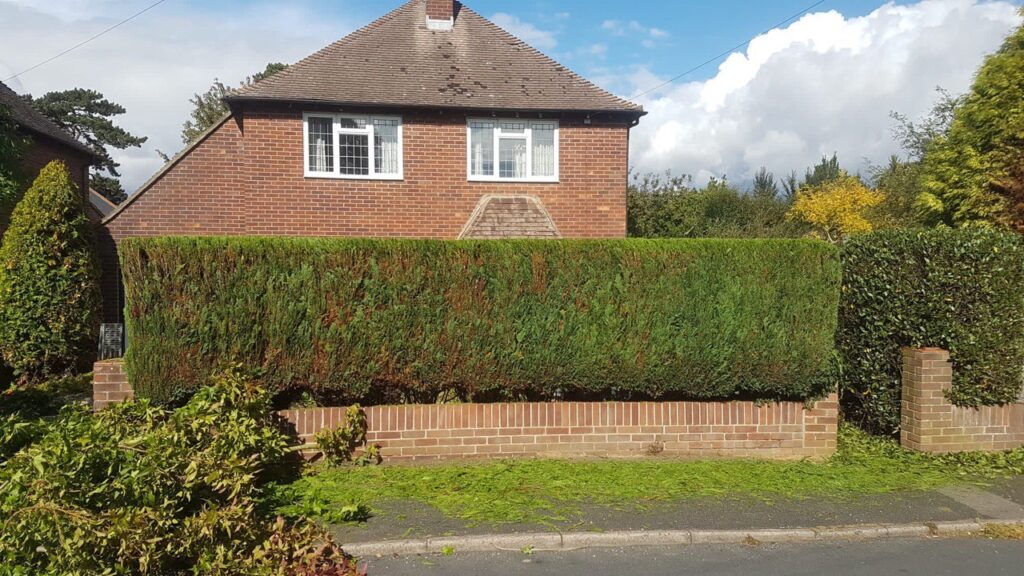Restoring Canopy Harmony: Tree Crown Reduction as a Remedy for Improper Tree Pruning
In the delicate art of arboriculture, proper pruning techniques play a pivotal role in shaping trees’ health, aesthetics, and longevity. However, amidst the din of urban landscapes, trees often fall victim to improper pruning practices, resulting in misshapen canopies, structural weaknesses, and diminished vitality. Amidst these challenges, tree crown reduction emerges as a beacon of hope, offering a solution for correcting the effects of improper pruning and restoring balance to our arboreal companions. Join us as we unravel the transformative power of tree crown reduction in remedying the consequences of improper tree pruning.
The Consequences of Improper Tree Pruning:
Improper pruning practices can have far-reaching consequences, undermining trees’ health and structural integrity. Common consequences include:
- Topping: Topping, the indiscriminate removal of large portions of the tree’s canopy, results in unsightly stubs and weakly attached regrowth. This practice compromises the tree’s natural form, reduces its ability to photosynthesize, and increases susceptibility to pests and diseases.
- Over-Thinning: Over-thinning of the canopy removes excessive foliage, disrupting the tree’s ability to produce energy through photosynthesis. This reduces the tree’s vigour, increases stress on remaining branches, and exposes it to environmental stressors such as sunburn and wind damage.
- Stub Cuts: Stub cuts are characterised by leaving stubs of branches rather than making clean, proper cuts. They impede proper wound healing and invite decay and disease into the tree. Stub cuts weaken branch attachments and compromise the tree’s structural stability over time.
The Role of Tree Crown Reduction:
Amidst the aftermath of improper pruning, tree crown reduction emerges as a restorative measure to rectify the damage and rejuvenate the tree’s canopy. Unlike traditional pruning methods focused solely on aesthetics, crown reduction prioritises structural integrity and vitality. By selectively reducing the size and density of the canopy, arborists can correct the effects of improper pruning, promote balanced growth, and enhance the tree’s resilience against future stressors.
Solutions for Correcting Improper Tree Pruning through Crown Reduction:
- Selective Branch Removal: Arborists identify and remove improperly pruned branches, focusing on stub cuts, crossing branches, and excessive regrowth resulting from topping. By making precise, strategic cuts, arborists promote proper wound healing and minimise the risk of decay and disease.
- Rebalancing the Canopy: Crown reduction aims to rebalance the tree’s canopy by selectively removing branches to restore a natural, harmonious form. This targeted approach promotes even growth distribution, reduces stress on weakly attached branches, and enhances the tree’s overall aesthetics and structural integrity.
- Promoting Vigorous Regrowth: Through crown reduction, trees are encouraged to produce vigorous regrowth from properly pruned branches. This regrowth strengthens branch attachments, improves canopy density, and enhances the tree’s ability to withstand environmental stressors.
Conclusion: In the wake of improper pruning practices, tree crown reduction is a beacon of restoration, offering hope for rejuvenation and renewal in our urban forests. By correcting the effects of improper pruning and promoting balanced growth, arborists can preserve our arboreal companions’ health, beauty, and longevity. As stewards of our green landscapes, let us embrace the transformative power of tree crown reduction, nurturing trees towards a future of vitality and resilience.
Call us on: 01234 981 895
Click here to find out more about Olney Tree Surgeons
Click here to complete our contact form and see how we can help with your tree’s need.

